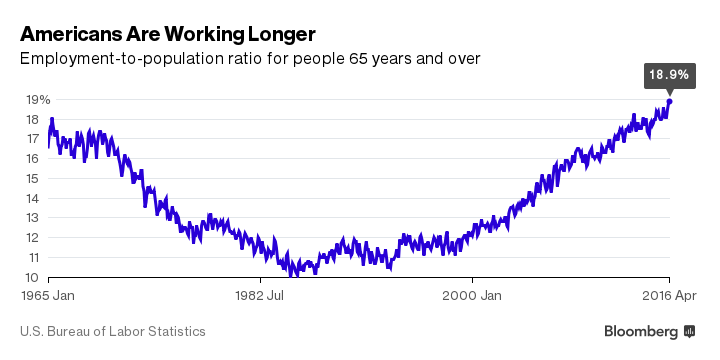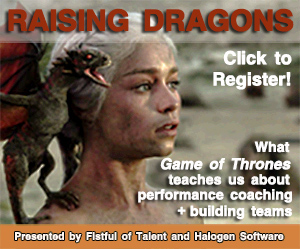CHART OF THE DAY: More Americans are Working Longer
I am a total mark for labor force data and today's Chart of the Day fits the bill perfectly. Check out the below chart on the Employment to Population ratio for Americans aged 65 and up over the last 50 years, and of course some FREE comments from me after the data
(Chart courtesy of Bloomberg)

Lots of interesting points we can tease out of this data, so let's go..
1. Just under 19% of Americans age 65+ are currently in the workforce, according to the BLS. This is the highest percentage of working people in this age cohort since the early 1960s.
2. Why are folks in this age cohort working in greater numbers than before? The most commonly cited reason according to a recent study from Transamerica is that they need the income and benefits. The financial crisis, and the tech bubble that busted a few years before that, devastated many baby boomers' retirement savings accounts, and has forced them to work longer than they had originally planned.
3. The next most commonly cited reason for 65+ folks to remain in the workforce is that, well, they like their jobs and want to remain a part of their organizations. You probably know, or maybe feel this way yourself, that traditional 'retirement' is not at all that appealing. From the same Transamerica survey, 36% of respondents indicated enjoying their work and wanting to stay involved in the workforce was a primary reason to delay or postpone traditional retirement.
4. Finally, a couple of other trends are factoring in to help drive the employment ratio up for older workers. Some organizations need the experience and expertise of these workers, and would have a difficult time replacing them should they begin to retire in greater numbers. In certain, less exciting industries, these older workers remain essential to the organization, and are being incented to stay in the labor force. And one more thing - folks are just living longer and remaining more productive later in their careers than in the past.
Add it all up and it seems that these trends suggest that more and more of the workforce will be comprised of older, 65+ workers. Business and HR leaders that want to take best advantage of this situation will make sure they are not ignoring older workers in their recruiting, are willing and able to make necessary adjustments and accommodations as needed, and are actively engaging their older workers in important projects and in mentoring their younger, less experienced workers.
We are all getting older. It just seems like it is happening all at once.
Have a great week!
 Chart of the Day tagged
Chart of the Day tagged  HR,
HR,  chart,
chart,  data,
data,  demographics,
demographics,  labor,
labor,  workforce
workforce  Email Article
Email Article 
 Print Article
Print Article 

